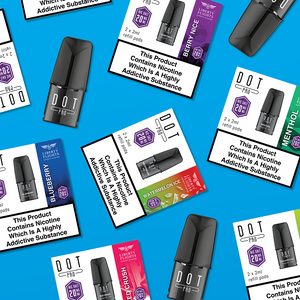
Chief Scientific Officer Monica Vialpando talks battery safety
With National Battery Day looming on Feb 18th and exploding e-cigarette batteries stuck at the very top of the news agenda, Liberty Flights’ new Chief Scientific Officer has shed some light on why things go wrong and, crucially, how to be safe with your batteries.
Liberty Flights has appointed Chief Scientific Officer, Monica Vialpando, to ensure world-class standards in quality and safety across all its products.

Monica, a PhD, is an internationally peer-reviewed published scientist whose previous work has led to her appointment at pharmaceutical companies Johnson & Johnson, Novartis, Genentech and Nektar Therapeutics. Monica is a member of the American Association of Pharmaceutical Scientists (AAPS) and the Belgian Society of Pharmaceutical Sciences.
Liberty Flights’ MD Matthew Moden said: “Monica’s CV is hugely impressive so we feel it is a real coup to welcome her to Liberty Flights.
Her science background and research in oral dosage forms, formulation development and the effects of inhalation on the human body means she is the perfect fit for us”.
So, we thought we’d put Monica through her paces and ask her to take a look at the hugely contentious issue of e-cigarette battery safety.
With tabloid headlines screaming about exploding e-cigarette batteries, it’s time to bust some of the myths and reinforce the message that good-quality batteries, from trusted sources and handled sensibly will rarely encounter problems.
Here, in our question and answer session, Monica offers the best possible advice for making sure your safety is never compromised when using e-cigarette batteries.
What makes batteries potentially dangerous?
“Batteries can become dangerous when they are used with incorrect chargers, over-tightened and/or overcharged. The most common danger occurs when components from different e-cigarettes are used along with incorrectly rated chargers. This can cause the battery to decompose, emit heat and therefore, result in failure. Also, over-tightening the screwed connections to the rechargeable battery can result in mechanical damage. For example, this can push down onto the centre pin and cause a short. Without a cut-off point (usually 10 seconds) the coil of the clearomizer can overheat, which can lead to rupture and produce harmful chemicals. Finally, in some instances, batteries modified by inexperienced users can create a dysfunction and result in explosion.”
What, if anything, is different about e-cig batteries compared to other conventional batteries?
“As with laptops and most other rechargeable devices, e-cigarettes use lithium-ion batteries. Most reputable e-cigarette kits are designed with overcharge protection; this is where a sensor stops the battery from receiving additional charge when too much voltage is received. Users must be careful when modifying parts themselves. The cut-off function is also a feature other batteries do not have.”
Can you give an overview of how you test the safety of Liberty Flights products (both hardware and e-liquid)?
“Liberty Flights only purchases batteries from a reputable source. Prior to selling, we verify that all new incoming hardware comes with a CE Certificate of Conformity, including the detailed test report. In addition, we also require suppliers to provide a Restriction of the use of Certain Hazardous Substances (RoHS) in Waste Electrical and Electronic Equipment (WEEE) certificate, under Directive (2011/65/EU) and the supporting test results. Other reports needed include IEC62133, UN38:3, transportation report and Material Safety Data Sheets (MSDS).”
Can you tell us about the recent technological developments for e-cig batteries?
“The first generation electronic cigarettes used automatic batteries. While these required a shorter charge time, the user could experience a vapour inhalation delay between puffs. E-cigarette batteries then evolved towards a larger, manual battery (650mAh being the standard, compared to 90 or 120mAh for first generations). These provide a longer life span, more vapour production and a better throat hit. The additional safety feature of clicking 5x on and off was also introduced with the manual batteries. They also come in a range of colours and styles to fit your mood and personalize your vaping experience.

“The industry is maturing towards a variable voltage (VV) battery where the typical output will vary from 3.2V to 4.7V. This further personalizes the experience by allowing the user to adjust the voltage according to their desired vapour and throat hit combined with their preferred e-liquid and atomizer/clearomizer. Some batteries have a LED display for the voltage, resistance and remaining charge. Also, many companies are moving away from traditional lithium-ion batteries towards lithium polymer (LiPo) batteries. From a technological perspective, they are similar to Lithium-ion batteries but come in a soft package or pouch, which makes them lighter.”
What does the future hold for e-cigarette batteries – are we close to any big breakthroughs?
“One breakthrough is the ability to connect the battery with a smartphone to track its consumption. Another recent breakthrough is a new feature where the battery can be charged by simply placing it on the base of a magnetic charging device. Because most models on the market decrease the output when the battery life begins to go flat, one anticipated breakthrough is the capacity of a battery to deliver a consistent output, regardless of battery life.”









